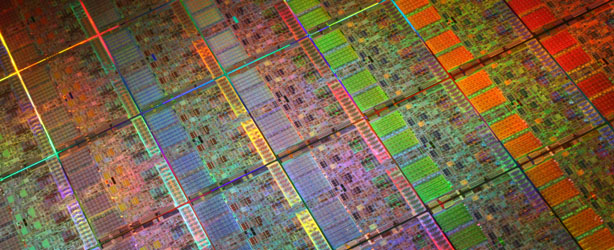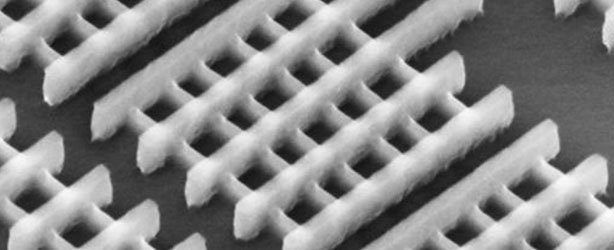
A large part of IDC's prediction is based on Microsoft's decision to release an ARM version of Windows. Of course, we've had ARM-based versions of Windows before, such as Windows Mobile, but the introduction of a fully-fledged Windows operating system for the architecture could mark a major turning point.
'Windows on ARM is a major assumption in our forecast.' says Rau. However, he also admits that this forecast could change if this falls through, for whatever reason. 'If Microsoft or ARM processor firms back away from the ARM-based PC processor market,' says Rau, 'ARM and its licensees could lower R&D and reduce ARM's ability to compete with x86 vendors.' As well as this, of course, decent software will need to be readily available for Windows on ARM - the huge range of software that's available for the x86 version isn't going to automatically run on a whole new processor architecture.
Rau also points out that ARM needs to 'offer its licensees ARM architectures that support PC applications' if it wants to succeed in the PC processor market, and this means more than just offering an architecture that can be shoehorned into a netbook with some innovative tweaking. However, Rau says that ARM understands this situation well enough, and that it will need to add 'features such as 64-bit processing, 64-bit memory addressing, support for large caches and other elements' to its processor architectures.
There are already other factors to consider here as well. This week, Intel announced that its new 22nm Tri-gate transistors would be making their way into future Atom processors. If Intel's claims about the performance to power consumption ratio of these transistors hold true, then could this technology could also threaten ARM's ability to get a foot into the low-end mobile PC processor market?
'Yes,' says Rau, 'even as we're talking about ARM processors invading the PC space, Intel's announcement means we're talking about when x86 processors, such as Atom, will invade the smartphone and tablet spaces where ARM has traditionally dominated. To the extent that x86-based processors are power efficient and high-performance and meet the needs of end users of, say, smartphones and tablets, they could affect the popularity of ARM processors in the future.'
Plus, while IDC predicts that ARM is soon going to start making headway into the PC processor market, Rau notes that it's still a long way off potentially threatening the dominance of x86. According to Rau, 'x86 processor vendors will still dominate in the PC space in 2015. While we're allowing for small volumes of some other processor architecture, x86 will have the balance of the share - approximately 87 per cent in 2015, which is on a unit basis.'
 Whether ARM starts making headway into the PC market or not, IDC still predicts that the x86 architecture will maintain a healthy 87 per cent dominance in 2015
Whether ARM starts making headway into the PC market or not, IDC still predicts that the x86 architecture will maintain a healthy 87 per cent dominance in 2015
This is, of course, all speculation at the moment, but it's based on some solid facts. Microsoft has confirmed an ARM-based version of Windows, and Nvidia has confirmed the development of its ARM-based Project Denver PC CPU. Whether ARM does end up with 13 per cent of the processor market in 2015 remains to be seen, but it's certainly being given a good starting chance. Plus, while 13 per cent isn't a huge share of the market, it's worth pointing out that AMD currently only commands 18.9 per cent of the PC processor market according to IDC's figures.
Is ARM likely to command a 13 per cent share of the processor market in 2015? Let us know your thoughts in the forums.
'Windows on ARM is a major assumption in our forecast.' says Rau. However, he also admits that this forecast could change if this falls through, for whatever reason. 'If Microsoft or ARM processor firms back away from the ARM-based PC processor market,' says Rau, 'ARM and its licensees could lower R&D and reduce ARM's ability to compete with x86 vendors.' As well as this, of course, decent software will need to be readily available for Windows on ARM - the huge range of software that's available for the x86 version isn't going to automatically run on a whole new processor architecture.
Rau also points out that ARM needs to 'offer its licensees ARM architectures that support PC applications' if it wants to succeed in the PC processor market, and this means more than just offering an architecture that can be shoehorned into a netbook with some innovative tweaking. However, Rau says that ARM understands this situation well enough, and that it will need to add 'features such as 64-bit processing, 64-bit memory addressing, support for large caches and other elements' to its processor architectures.
There are already other factors to consider here as well. This week, Intel announced that its new 22nm Tri-gate transistors would be making their way into future Atom processors. If Intel's claims about the performance to power consumption ratio of these transistors hold true, then could this technology could also threaten ARM's ability to get a foot into the low-end mobile PC processor market?
'Yes,' says Rau, 'even as we're talking about ARM processors invading the PC space, Intel's announcement means we're talking about when x86 processors, such as Atom, will invade the smartphone and tablet spaces where ARM has traditionally dominated. To the extent that x86-based processors are power efficient and high-performance and meet the needs of end users of, say, smartphones and tablets, they could affect the popularity of ARM processors in the future.'
Plus, while IDC predicts that ARM is soon going to start making headway into the PC processor market, Rau notes that it's still a long way off potentially threatening the dominance of x86. According to Rau, 'x86 processor vendors will still dominate in the PC space in 2015. While we're allowing for small volumes of some other processor architecture, x86 will have the balance of the share - approximately 87 per cent in 2015, which is on a unit basis.'
 Whether ARM starts making headway into the PC market or not, IDC still predicts that the x86 architecture will maintain a healthy 87 per cent dominance in 2015
Whether ARM starts making headway into the PC market or not, IDC still predicts that the x86 architecture will maintain a healthy 87 per cent dominance in 2015This is, of course, all speculation at the moment, but it's based on some solid facts. Microsoft has confirmed an ARM-based version of Windows, and Nvidia has confirmed the development of its ARM-based Project Denver PC CPU. Whether ARM does end up with 13 per cent of the processor market in 2015 remains to be seen, but it's certainly being given a good starting chance. Plus, while 13 per cent isn't a huge share of the market, it's worth pointing out that AMD currently only commands 18.9 per cent of the PC processor market according to IDC's figures.
Is ARM likely to command a 13 per cent share of the processor market in 2015? Let us know your thoughts in the forums.

MSI MPG Velox 100R Chassis Review
October 14 2021 | 15:04









Want to comment? Please log in.